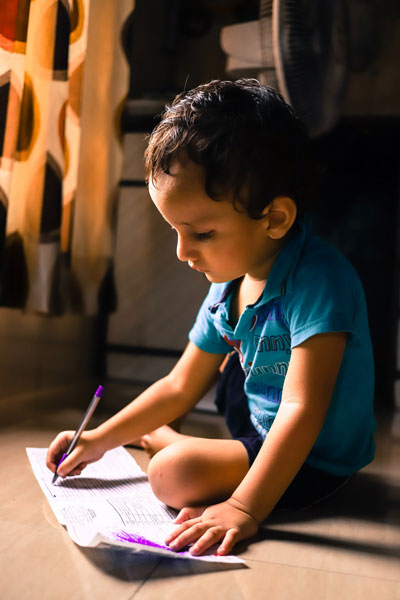 Have you ever thought about asking your child to write without explicitly making them put their thoughts down on paper? It may seem counterintuitive to practice writing without actually writing, but the process is actually multifaceted. Most of the time, children have a hard time starting writing. This isn’t because they don’t have anything to say, but treating the brain like a muscle is useful for thinking about this process as well. You wouldn’t go on a mile run without stretching out your legs first. Writing works in a similar way. Before children can create, they need the time to shake the cobwebs off and stimulate their creativity. At MathGenie we make sure that each student opens their mind using MathGenie yoga before we even put pencil to paper. At home, some of the same opportunities are available.
Have you ever thought about asking your child to write without explicitly making them put their thoughts down on paper? It may seem counterintuitive to practice writing without actually writing, but the process is actually multifaceted. Most of the time, children have a hard time starting writing. This isn’t because they don’t have anything to say, but treating the brain like a muscle is useful for thinking about this process as well. You wouldn’t go on a mile run without stretching out your legs first. Writing works in a similar way. Before children can create, they need the time to shake the cobwebs off and stimulate their creativity. At MathGenie we make sure that each student opens their mind using MathGenie yoga before we even put pencil to paper. At home, some of the same opportunities are available.
Here are writing exercises for your child that don’t involve writing:
- Have your family sit around the living room or around the dinner table. Start by saying the first sentence of a story. Anything you might think of or create yourself. Each family member in turn will add one sentence to the story until it is completed. In this way, the child has to think quickly about what will happen next in the story and start to think creatively about how the problem in the story might be solved or develop along the way. Your own speech will also show them what a good sentence sounds like in a story.
- Select an odd array of items from either inside your home or outside of it. These items should be unfamiliar to your child. Start a game of improvisation. You will ask your child to take one of the objects and pretend they are a door-to-door salesman. They will have to explain what the object does and what its function is as they try to convince you to buy the product. This works two-fold in that the child practices not only their creativity but also their presentation skills. You can even take turns and see who can sell the most amount of objects.
- Have your child draw a picture of a story they might want to write about or a problem/issue they want to explore. During this process of visualization and creation, your child begins to develop the background information to what they are drawing. They can start making connections as so how the rest of it will play out and most importantly how to begin to start writing about the image. After they finish have them explain what is happening in the picture, making sure to ask them prompting questions about what happened before/after
- Designate at least 20 minutes a day to a reading activity. If your child reads for 20 min a day, then that’s 3,600 minutes in an entire school year which roughly adds up to 1.8 million words a year. Can you imagine the vocabulary your child will obtain that will not only enhance written language skills but will also translate into a high verbal proficiency? If you want your child to write it is absolutely imperative that they read. Incidentally, these are also the children who score in the 90th percentile in their standardized tests. The benefits are endless.
(http://bbccatholic.com/school/multimedia/school-files/teachers-1/mrs-angela-kaping-1/404-why-read-1/file)





